Shape Your Thinking at TEDxWindyCity
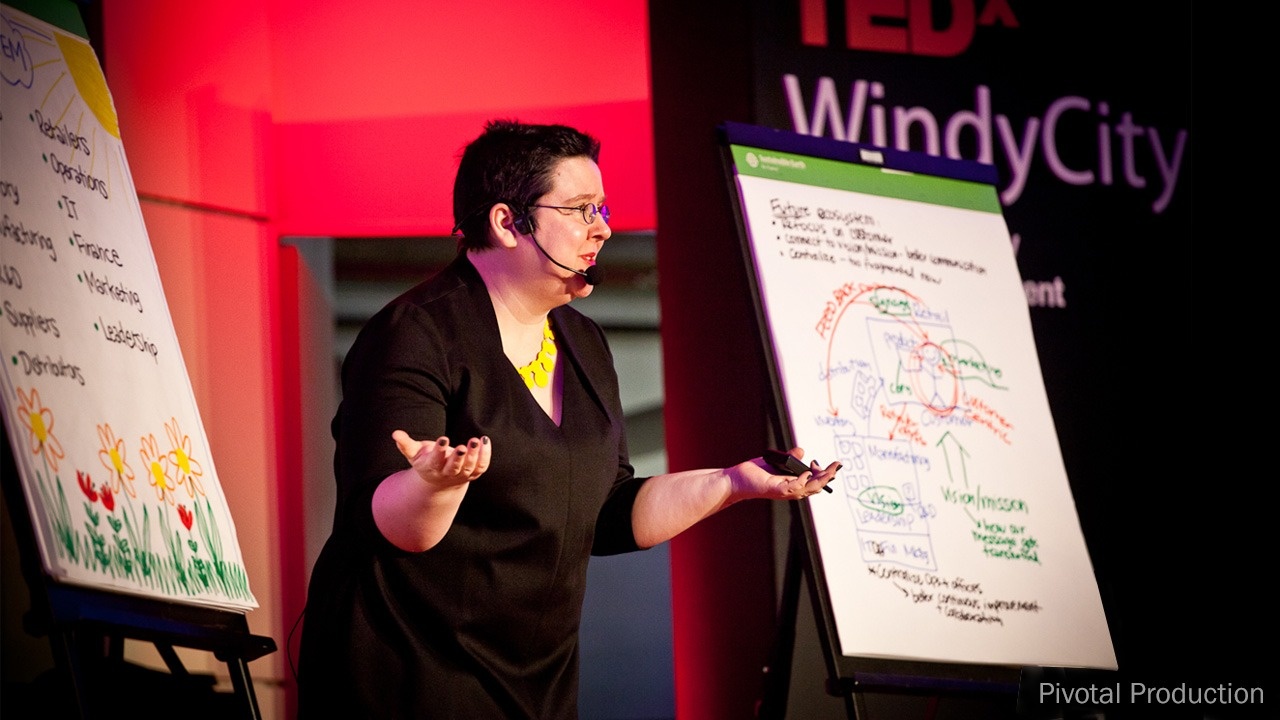
Shape Your Thinking is my talk at TEDxWindyCity 2013. Please do watch my "idea worth sharing," and scroll down for more about the experience.
First, a huge THANK YOU to Shannon Downey of Pivotal Production and the phenomenal Dream Team who crafted a beautiful event.
Plenty of folks dream of doing a TED/TEDx talk, and I know many smarties who have. You may pour your all into your 18-minutes-or-less. Yet. the production day itself and the video that follows may range from stellar to sucky. My experience was ⭐⭐⭐⭐⭐.
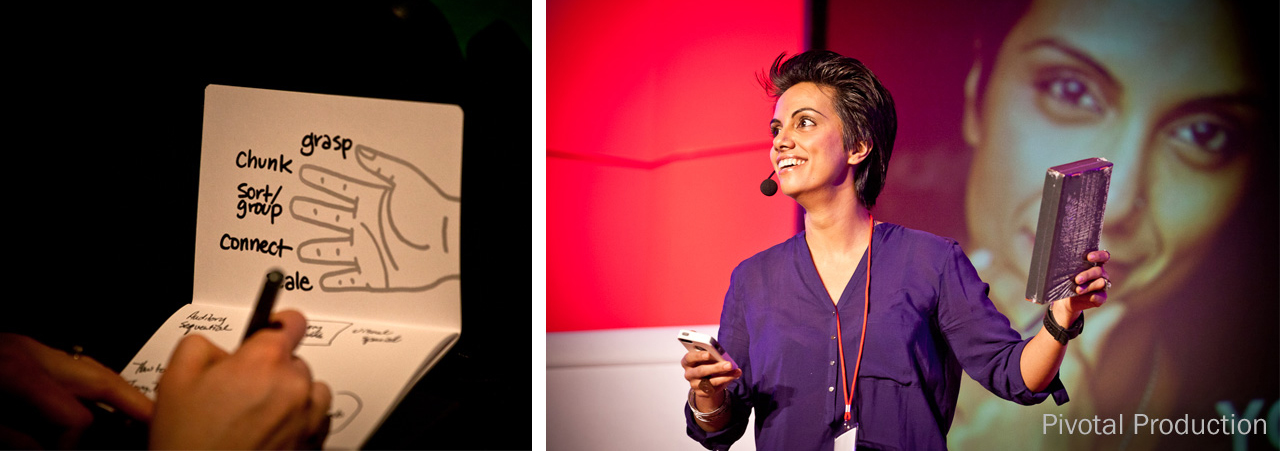
It was my great pleasure to be the first speaker, and Neuland was extremely generous to donate a marker and notebook kit to every person in our 700+ person full house.
Left: a participant draws as they listen. Right: Co-emcee Fazia Mirwa guides a giddy audience to unwrap their idea shaping kits.
Nothing beats giving each person beautiful tools to take action on what I share in my talk.
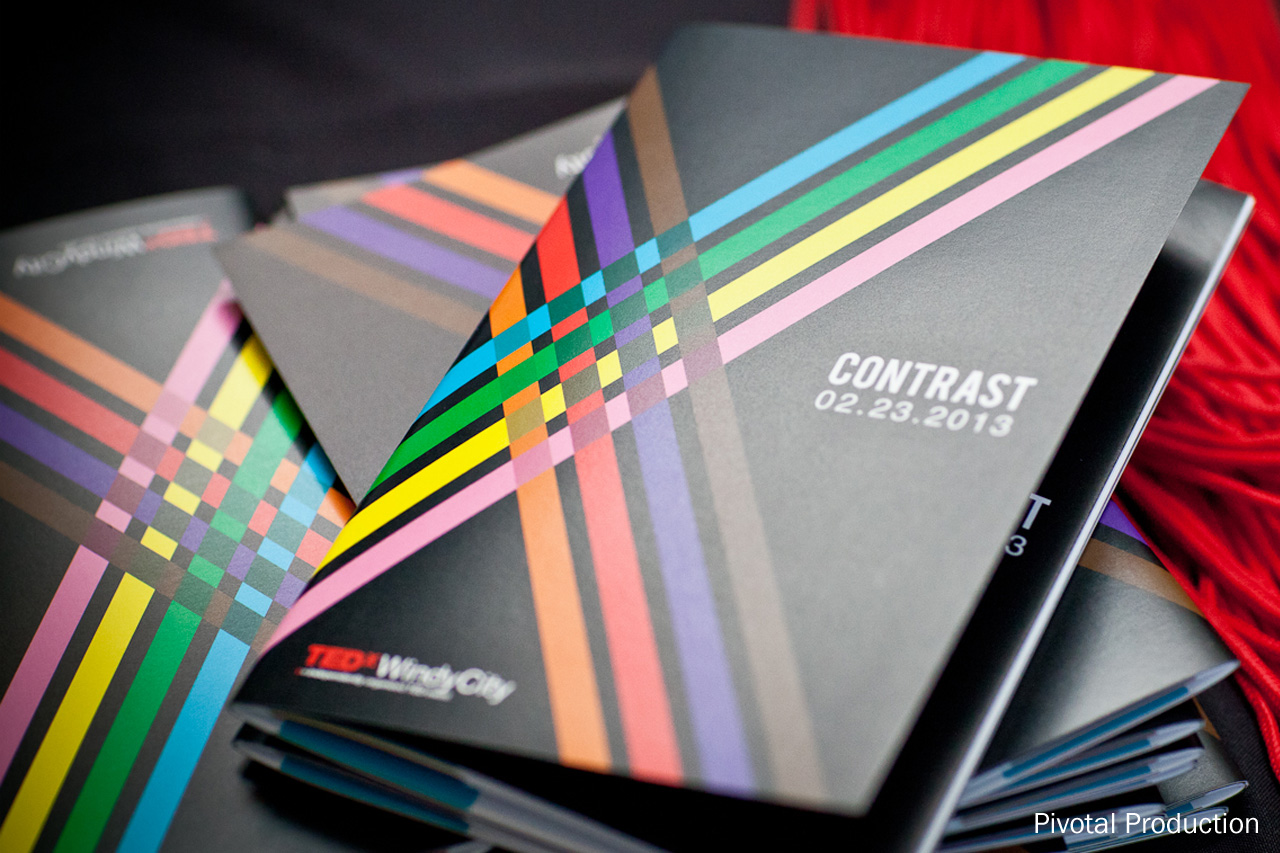
Every TEDx event has a theme, and our was Contrast. Our logo was a vibrant take on the train lines of the city.
I'm much more of an and person than an or person. I wove in the days contrast by sharing two types of thinkers.
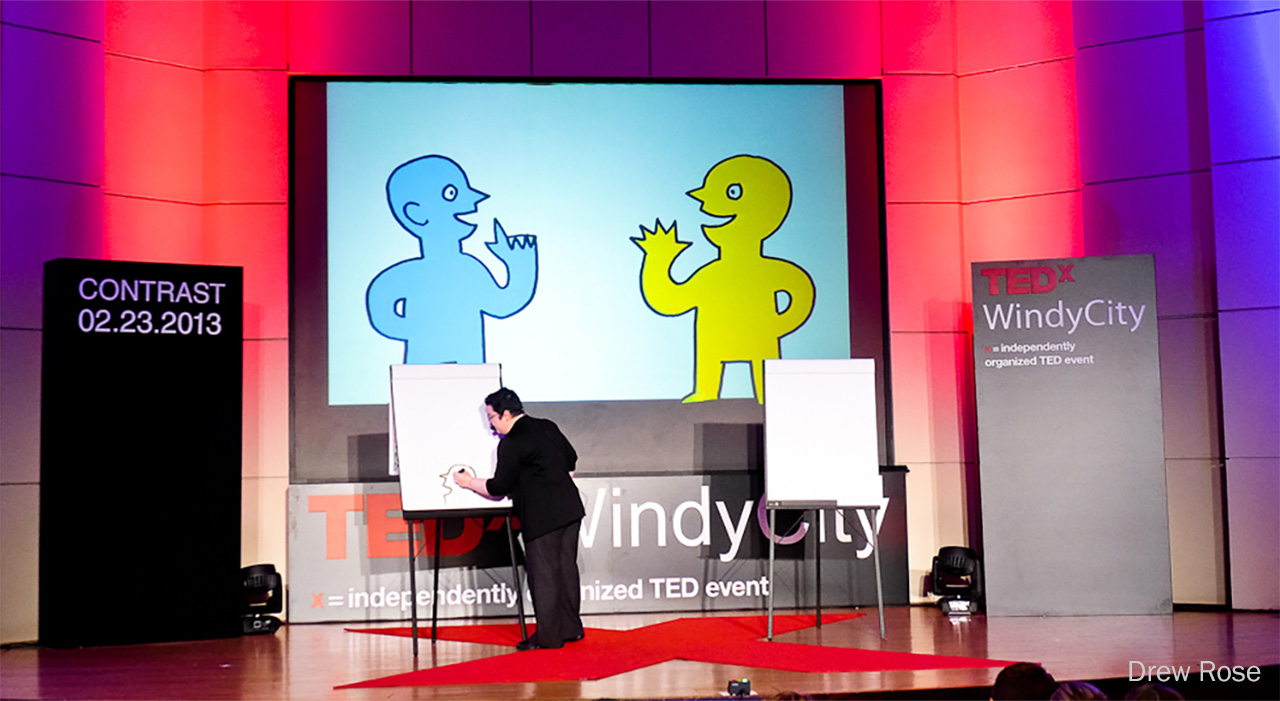
Licensed clinical and counseling psychologist Linda Kreger Silverman assessed 6500+ students over her career, and found two types of learners. On the left, the auditory-sequential learners who:
- Learn step-by-step
- Think in images
- Focus on details
On the right, the visual-spatial learners:
- Learn all-at-one
- Think in pictures
- Find the connections between the details
This slide from the talk shows that two-thirds of us are visual-spatial.
Take that, educational systems and workplaces!
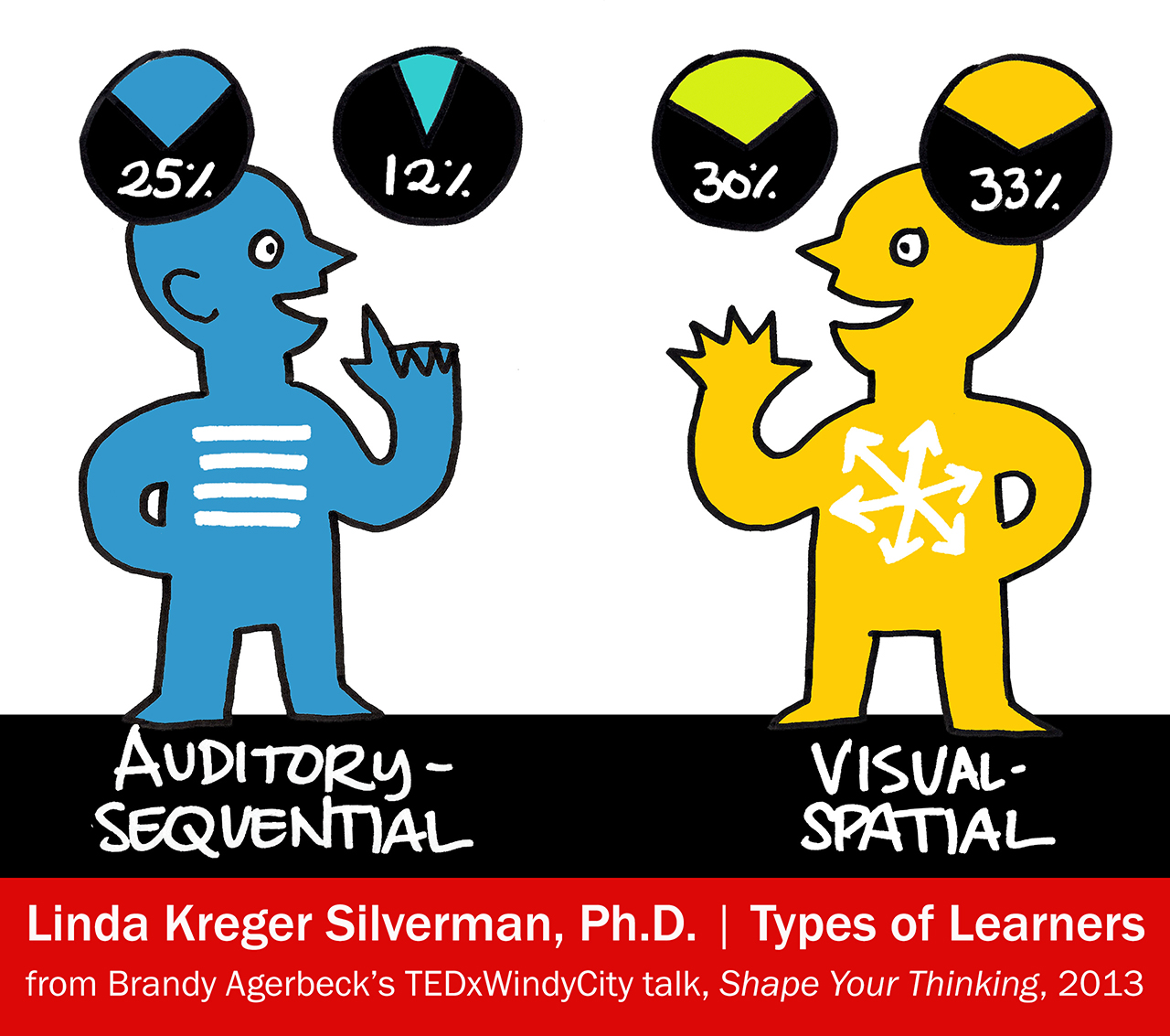
I drew a third type in between that is the green hybrid.
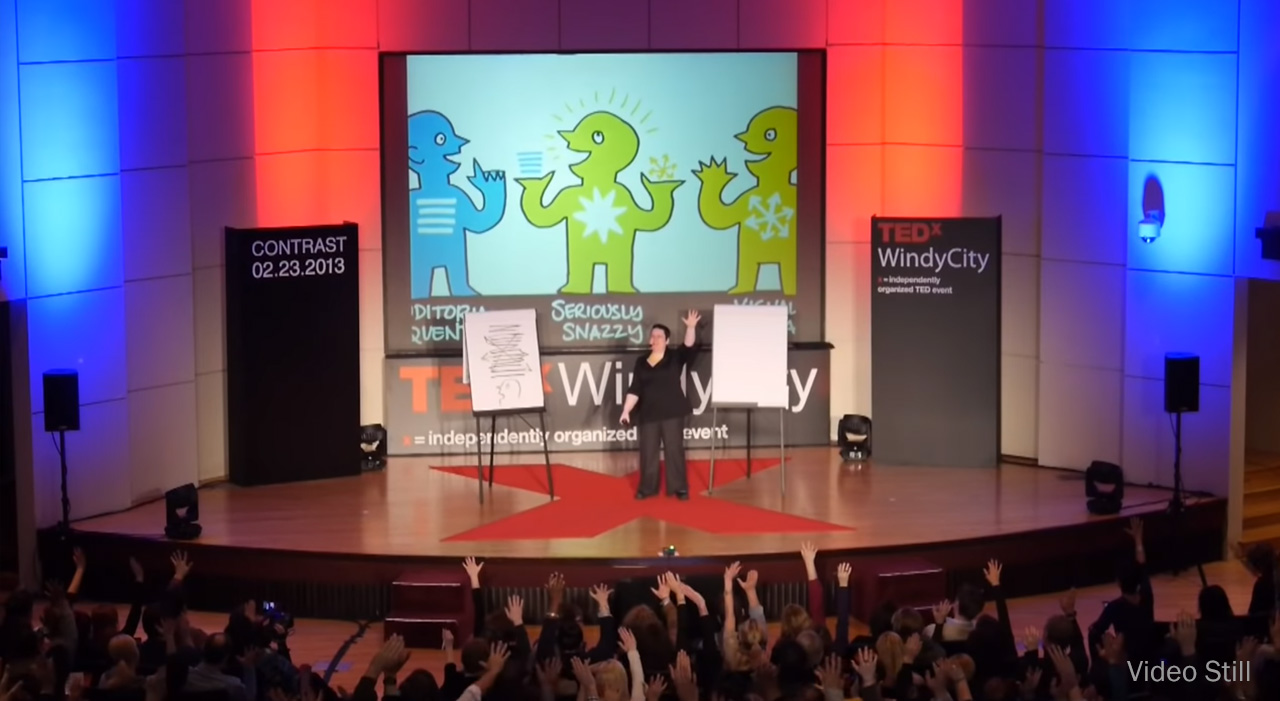
This was my favorite moment from the stage. I asked the audience to raise their hand if they wanted to learn 5 steps to shape their thinking.
Hands shot up!
In the middle section of my talk, I walked us through the five steps of shaping your thinking:
Step 1 | Chunk: Pulling out the most useful chunks out of your big pile of info.
Mrs. Andrew blew my mind wide open in 6th grade when we learned how to write papers using index cards. These are recent stacks:
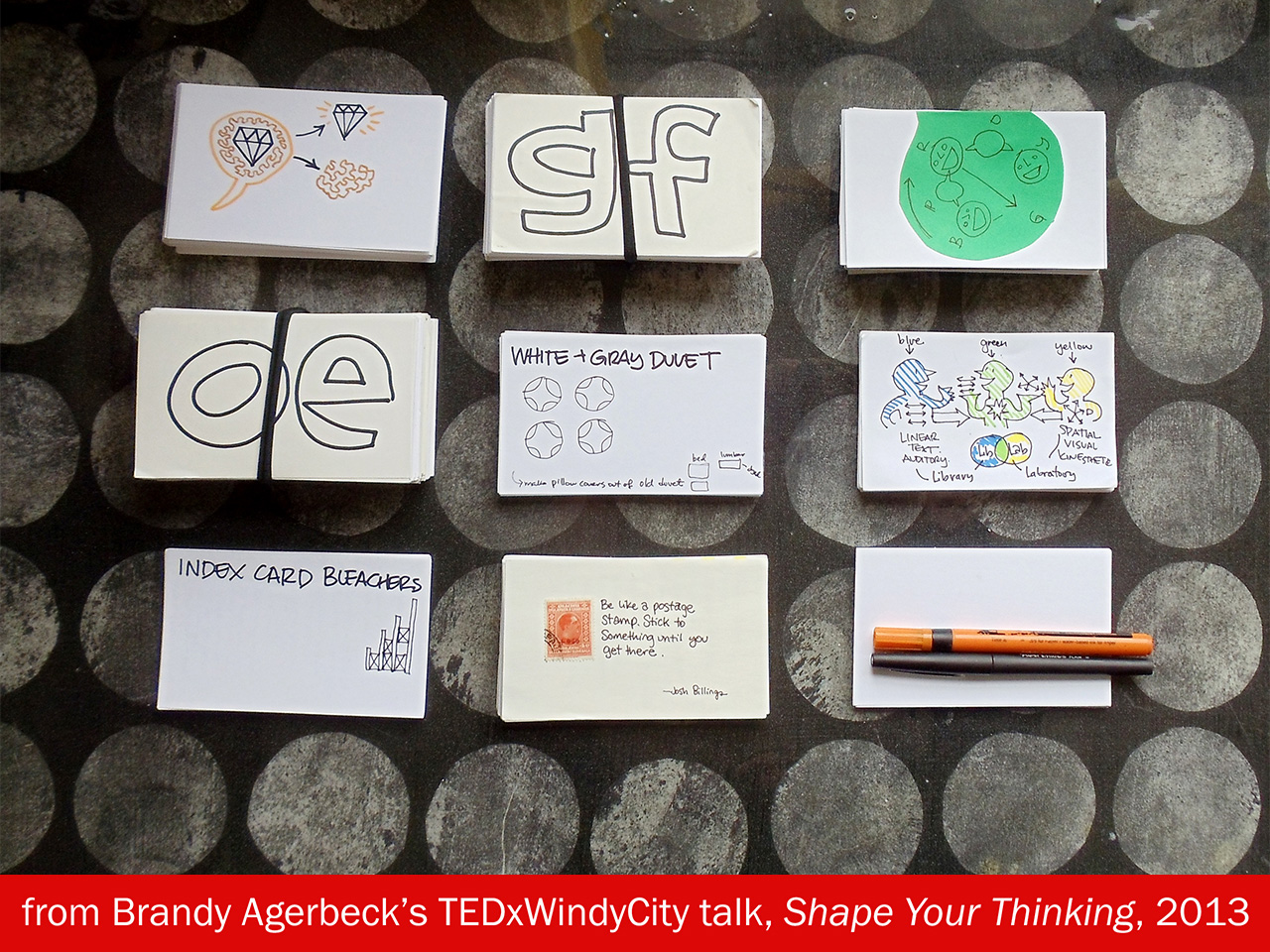
Step 2 | Sort + Group: Start moving around those chunks into groupings meaningful groupings

I share my Tangible To-Do List with sticky notes sorted and grouped three ways:
- By project
- By priority
- To-Do vs. Done
Update: You can learn more about this technique on pages 159-164 in The Idea Shapers. I describe the Tangible To-Do List at the end of the chapter on The Cluster.
Step 3 | Connect + Contain: Use line between ideas and around idea to represent relationships and qualities of your ideas
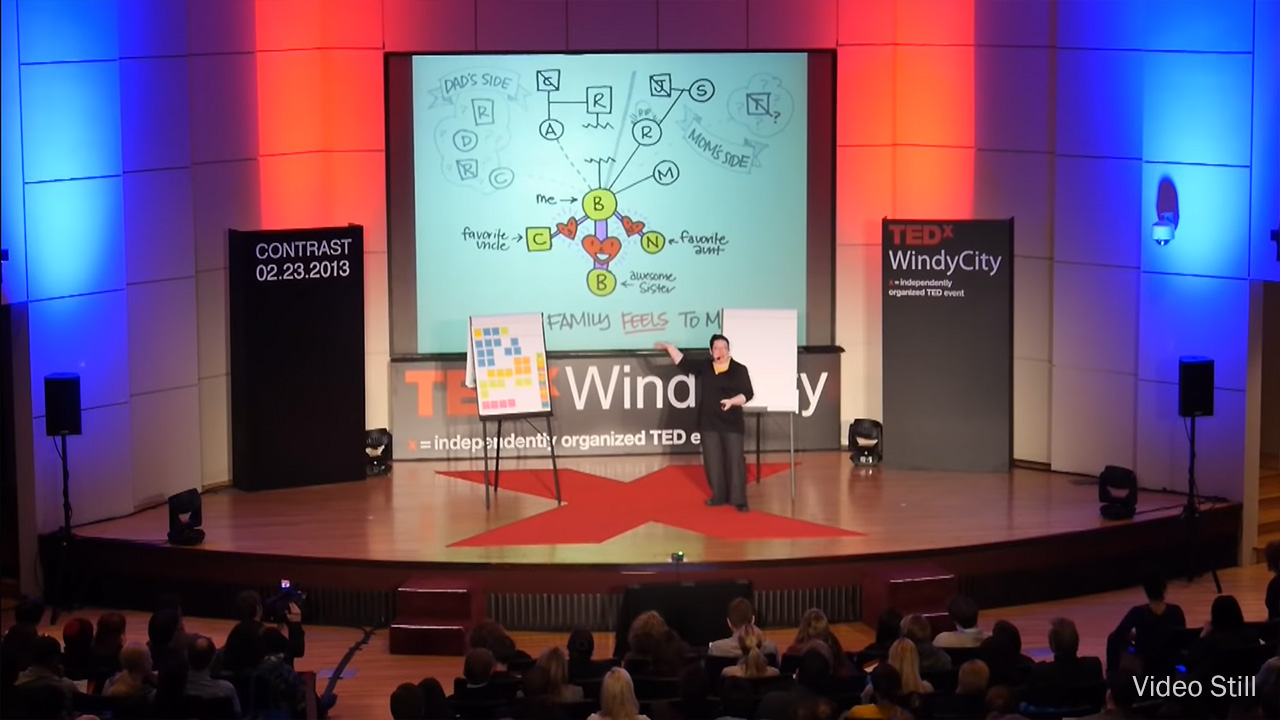
Plenty of knowing laughter from the audience when I shared my family tree drawn from my POV.
Step 4 | Scale: Changing the size of your canvas and the size of your ideas

I love massive shift in scale between the size of my hand on screen and my two Brandy-sized actual hands.
Below is the foamcore board I used to organize my talk. Going BIG to see all the ideas at once.
I'm pointing to the three 1" pins (from Chicago's own Busy Beaver Button Company) that distilled the 3 types of thinkers. Everyone got a set in their schwag bag.
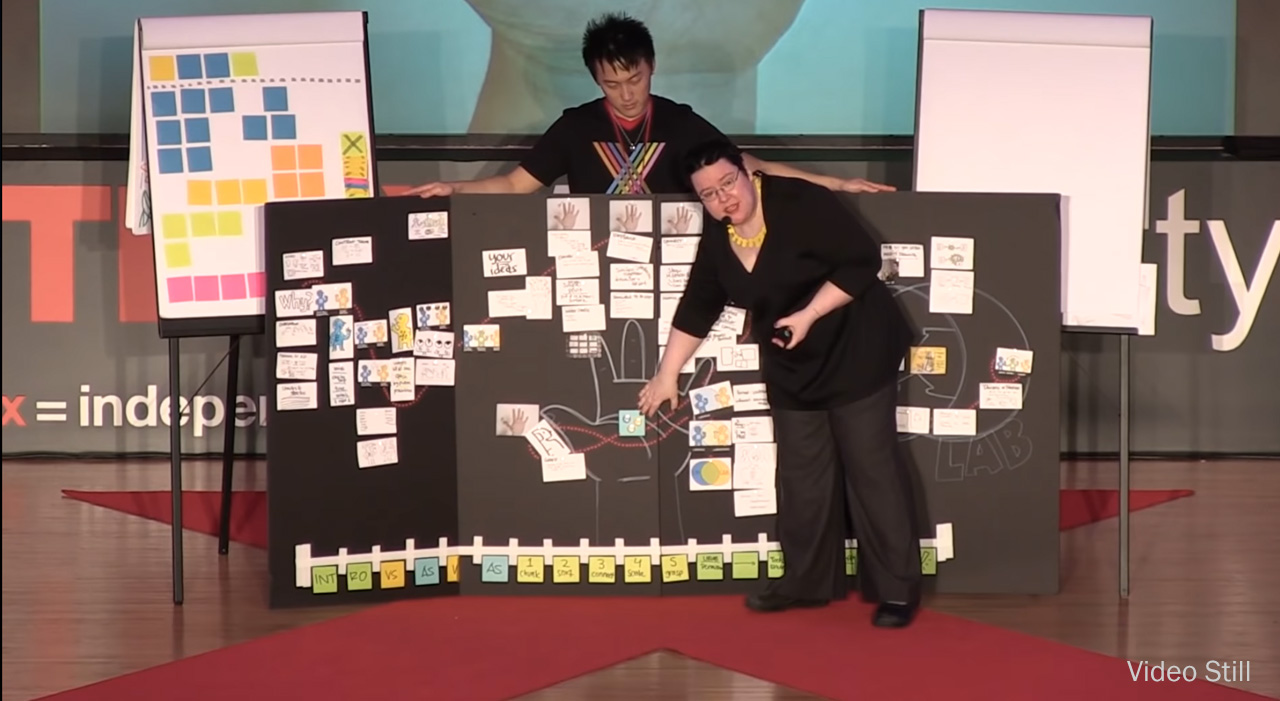
Notice the timeline along the bottom? That's ticking off the 18 minutes of my talk. One sticky note per minute.
Step 5 | Grasp: Once you've worked the first four steps, you can grasp your thinking in new ways.

The third and final section of my talk was about creating "LibLabs" which blend the best of libraries and laboratories. Spaces, tools, and resources to shape thinking.
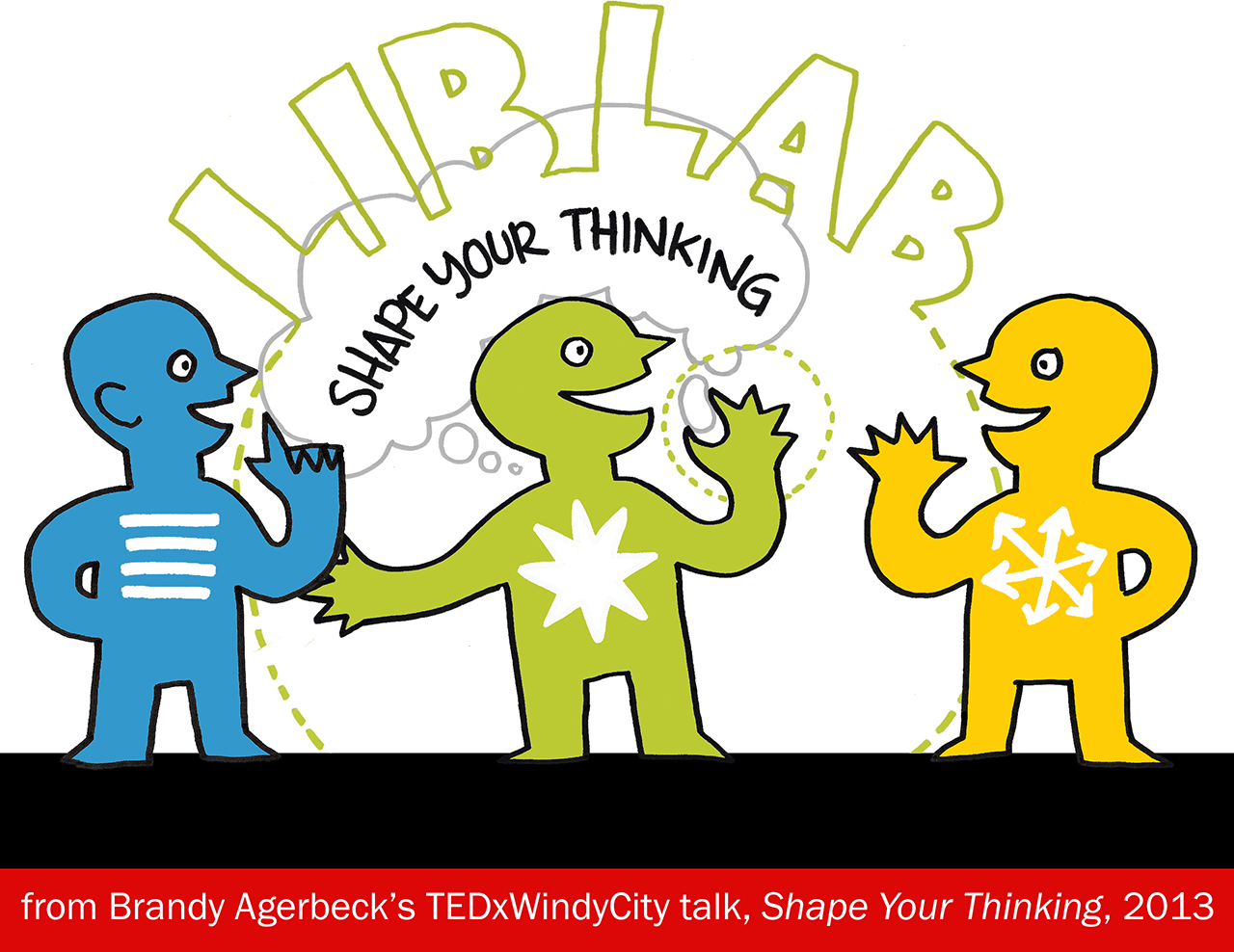
Three suggestions for LibLab-success:
1 | Give yourself permission to draw.
It only takes 1 comment to turn that drawing switch off. It can be switched back on now.
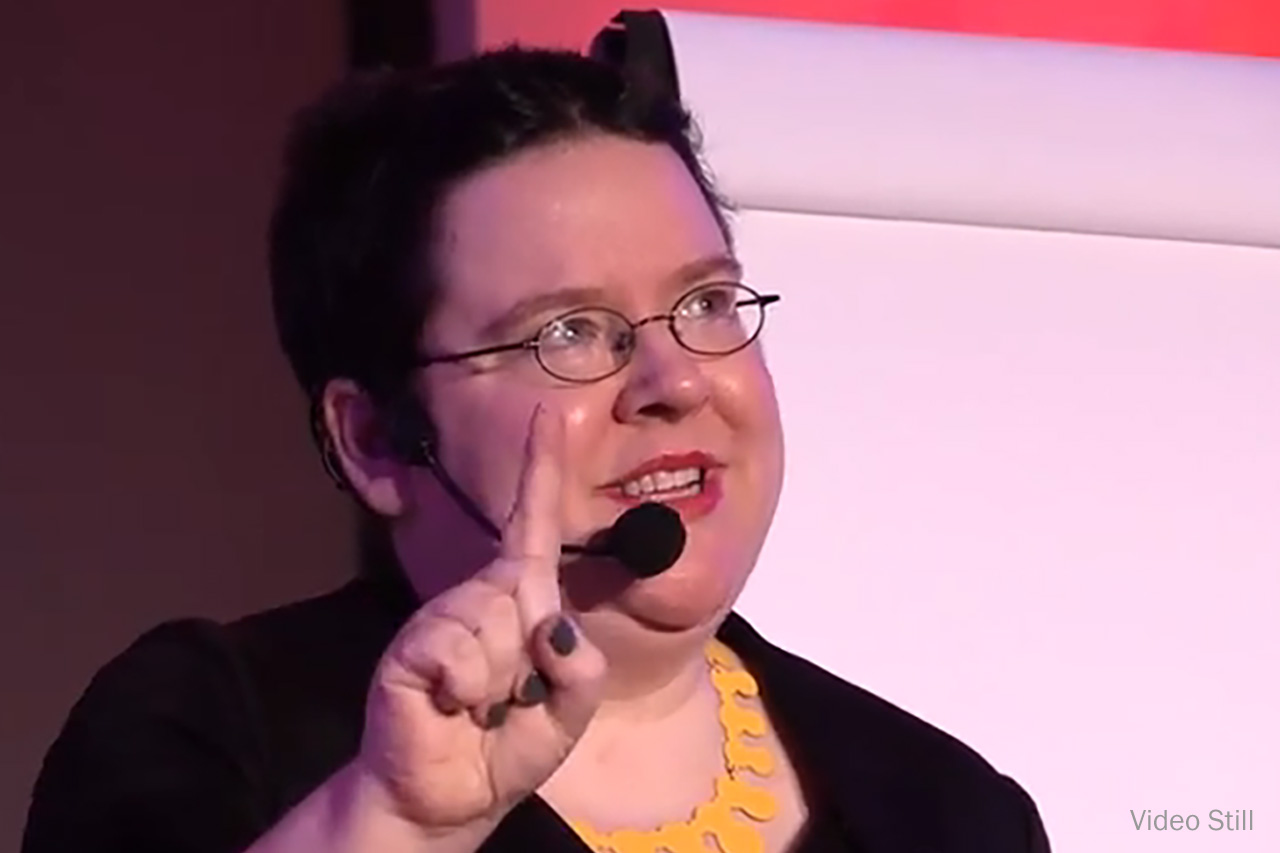
2 | Build an Idea Shaper Station
An example station full of supplies to grab and get thinking:

3 | Watch what you reward
My second favorite moment was contrasting the pretty, product-focused flipchart on the left against the messy one on the right where so heavy mental lifting happened.
More often the pretty one gets the praise. I take the process-focused one any day of the week. That's progress right there.
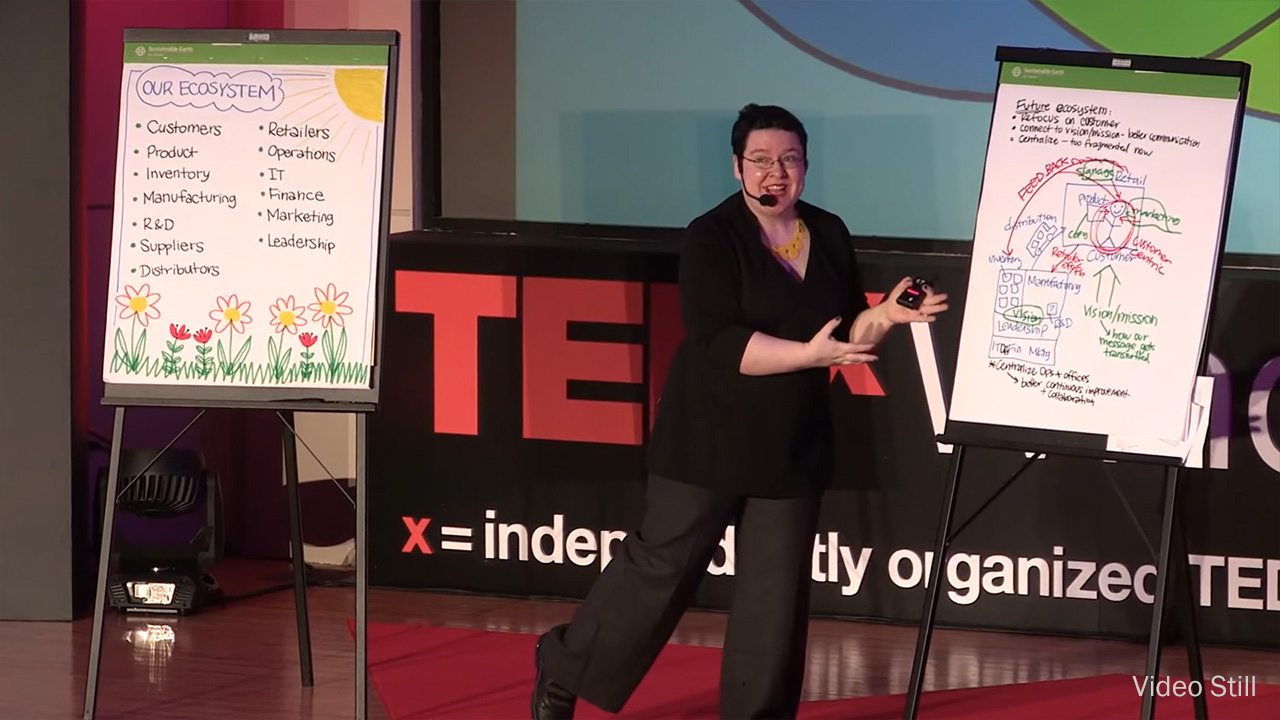
Done and done.
On the first break, I was in a sea of people in the lobby. A woman approached me and told a story about how she noticed her young son was always arranging blocks as he played. The next time she returned to her work she saw the brilliant parallel with the diagrams she would draw to shape her complex work.
She had a boss who asked, "Why are you always drawing boxes?" She lit up sharing this with me because she so clearly saw how she and her son thought in contrast to how her boss did.
The best.
Co-emcee Danny Bernardo, I swear unprompted by me, came to the stage and shared how he was using the sketchbook.
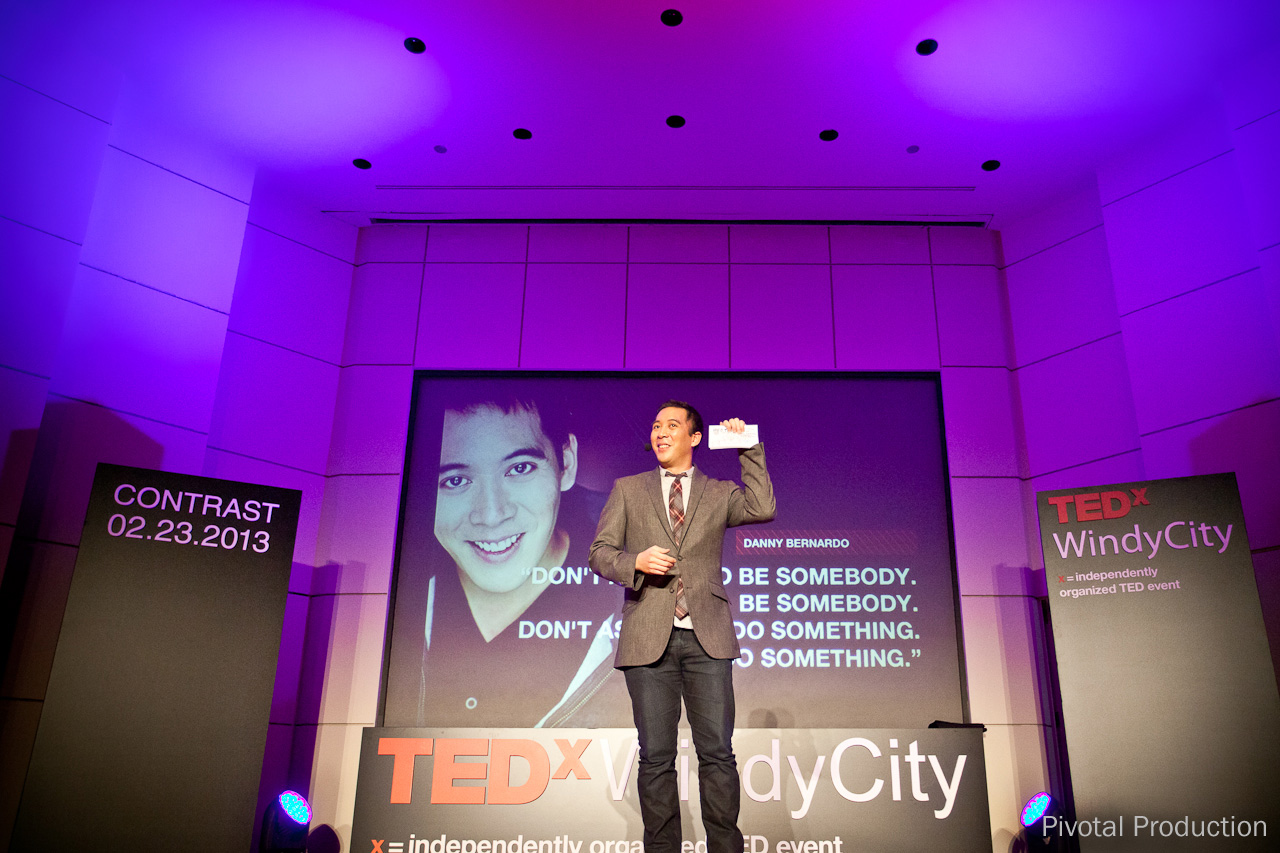
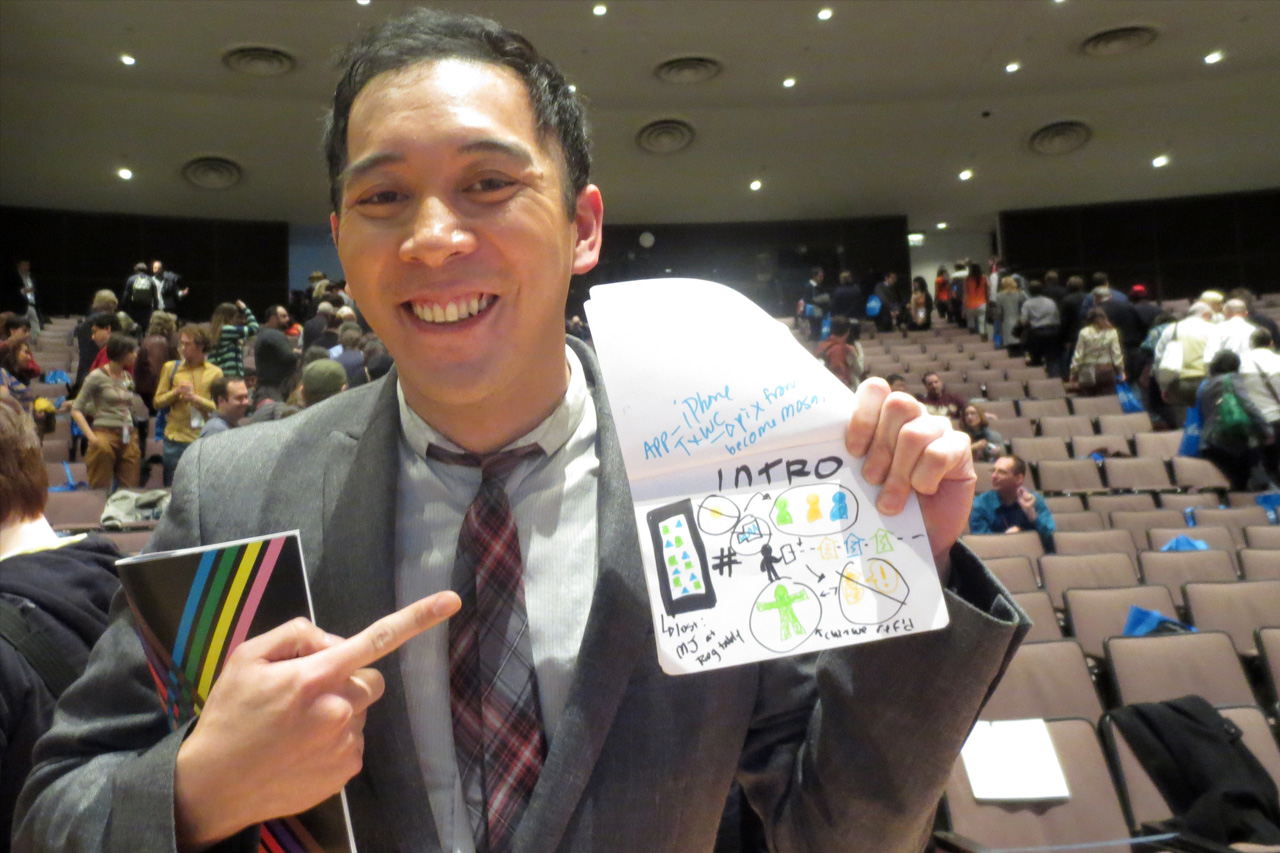
Also, the best.
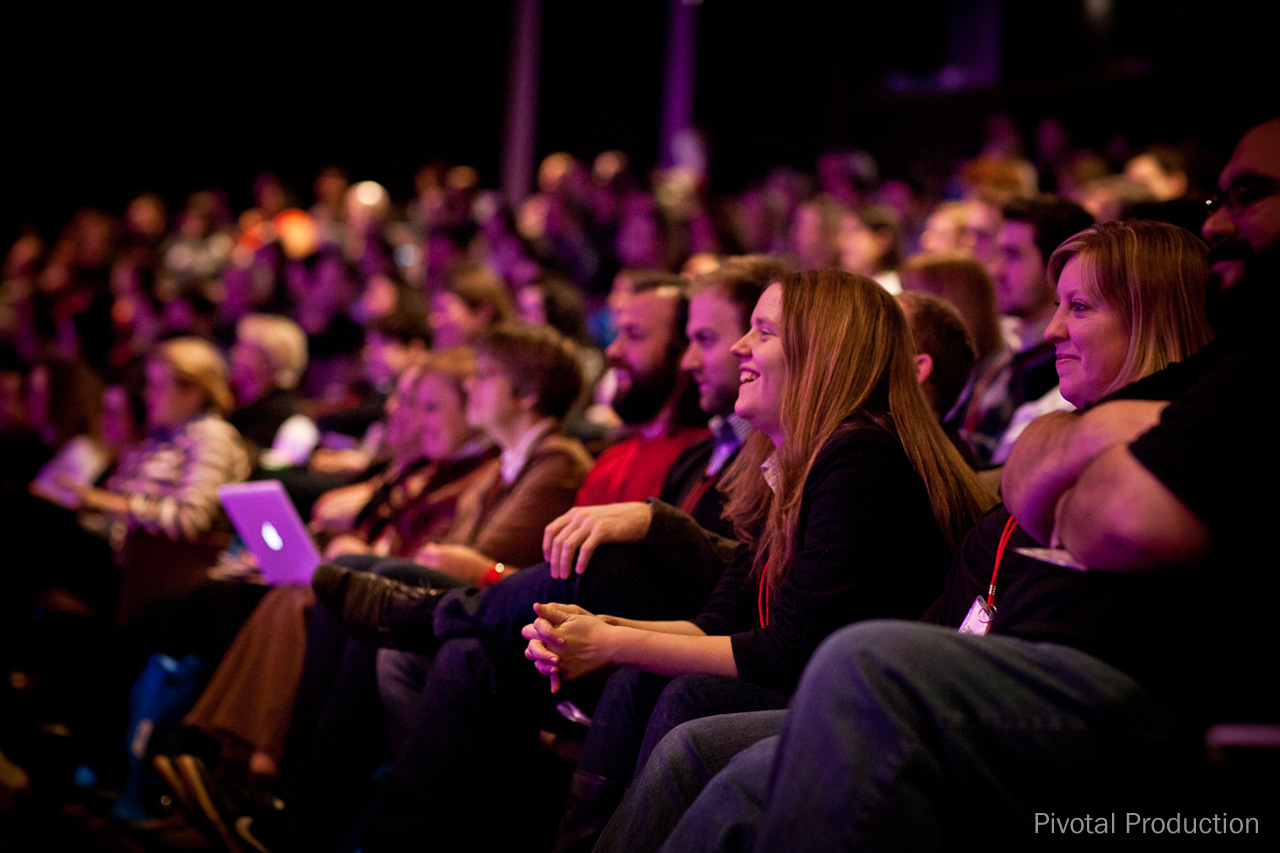
Yet another best was the day concluding with The Dance Team synthesizing each of the 10 speakers' ideas in one piece. Collaborating with Christopher Knowlton at Metropolis Coffee in preparation was a perfect Grade A nerdfest.
I was delighted that our thinky TEDx day started and ended with kinesthetic methods.
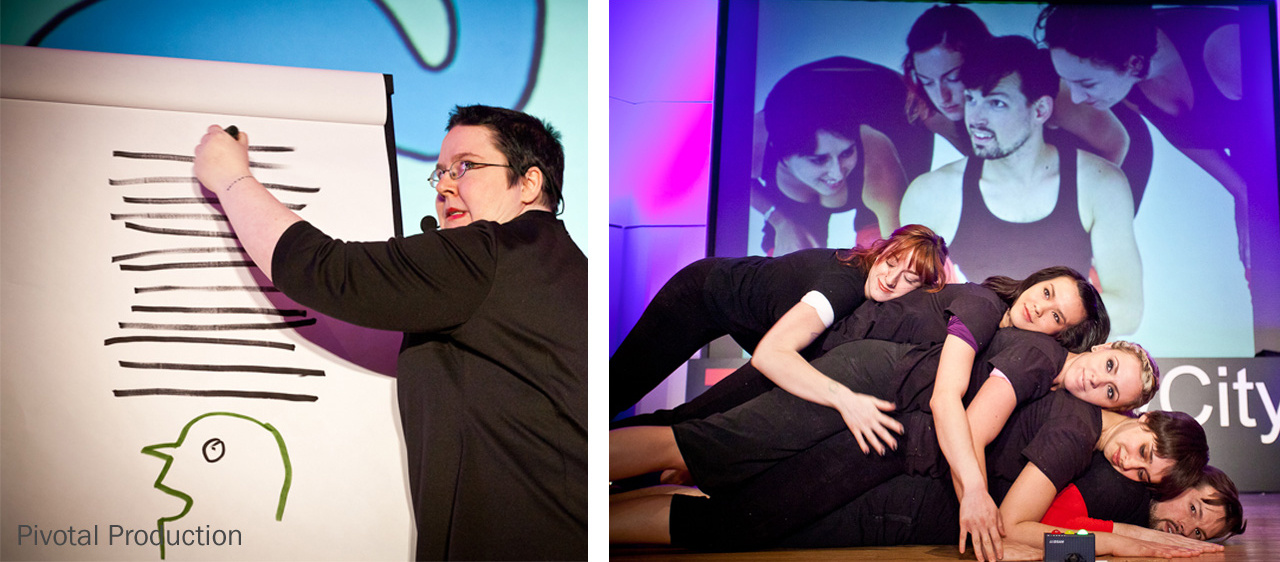
Shout out to Jenni Grover who supported me throughout the lead up to the event. She's wearing the Snazzy Green person pin. And our smiles say it all.
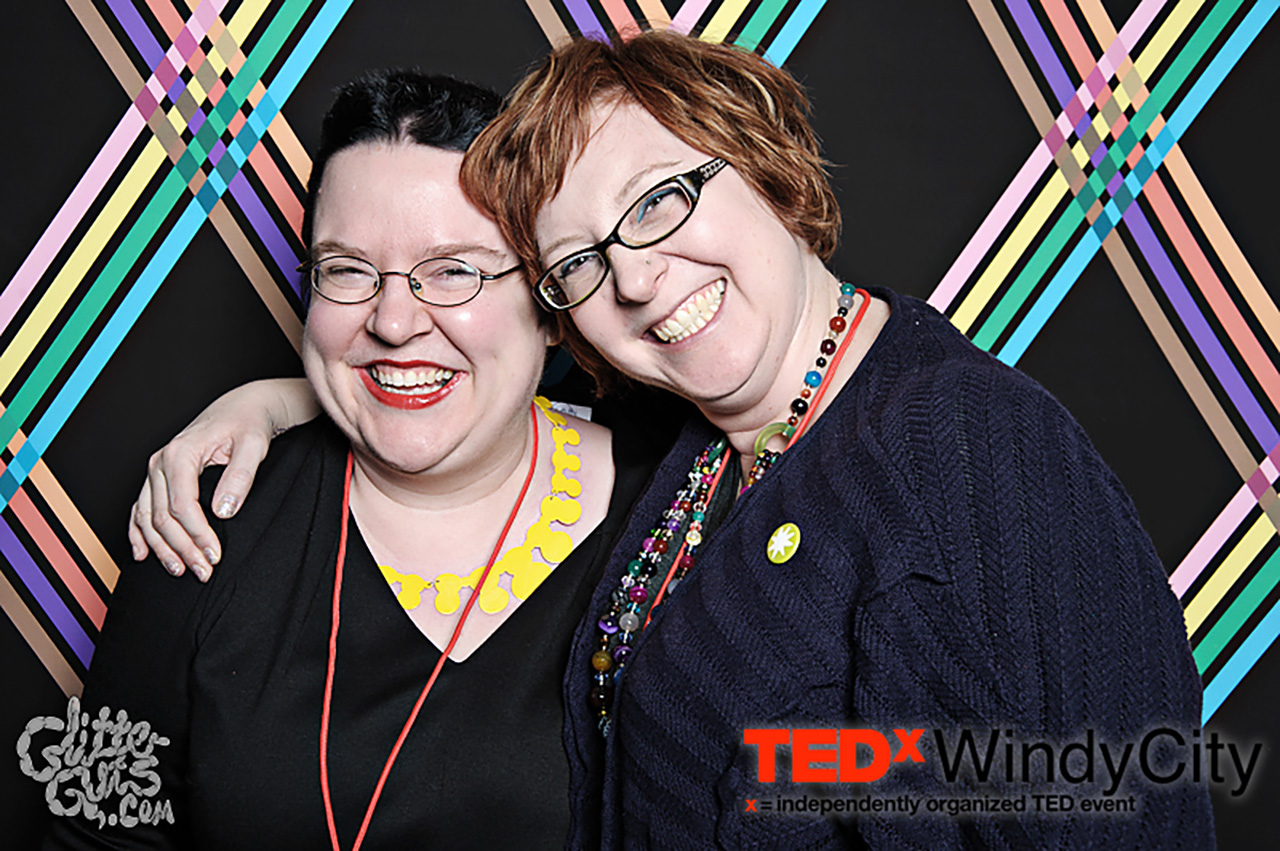
July 2016 update: Christopher Knowlton is a contributor to our anthology Drawn Together Through Visual Practice. His article is "Dancineering, Researchals, Bodystorming, and Informance." It was pure pleasure working with Christopher.
November 2016 update: I knew the seeds of my next book were planted at TEDxWindyCity. The five steps you see in the video organize the 24 idea shapers in my book The Idea Shapers: The power of putting your thinking into your own hands.


